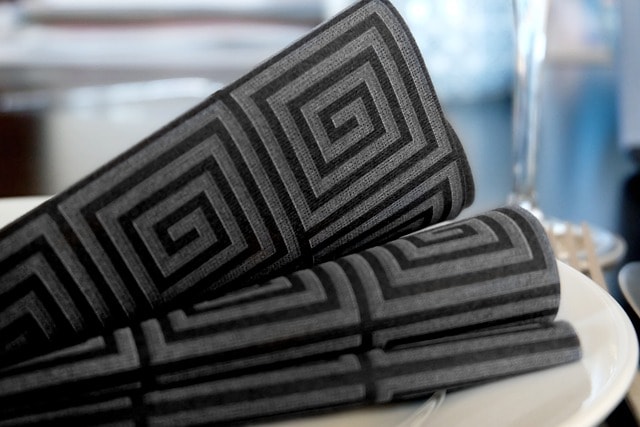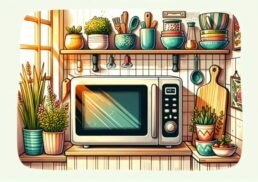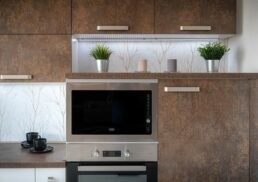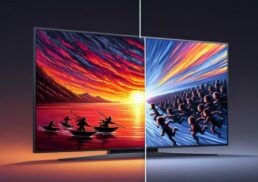Non woven fabric cloth is created by bonding fibers instead of weaving. This makes it versatile for use in medical, automotive, and home products. Learn about its benefits, uses, and production processes in this article.
Table of Contents
Key Takeaways
Non-woven fabrics are engineered from separate fibers bonded through various methods, allowing for tailored properties that suit specific applications.
Key characteristics of non-woven fabrics include durability, high absorbency, and flexibility, making them essential in sectors such as medical, home furnishings, and industrial applications.
Choosing the right non-woven fabric requires consideration of factors such as fiber properties, expected performance, breathability, and cost, ensuring suitability for the intended use.
Understanding Non Woven Fabric Cloth

Non-woven fabrics are a marvel of modern engineering. Unlike woven fabrics, which are made by interlacing yarns, non-woven fabrics are created from separate fibres that are bonded together. This bonding can be achieved through various methods, including chemical, mechanical, heat, or solvent treatments. The result is a fabric that consists of one or more layers of fibres, designed to meet specific performance criteria.
These fabrics can be classified into disposable or durable goods based on their intended use. Disposable non-woven fabrics are commonly used in medical and hygiene products, while durable non-wovens find applications in automotive and home furnishings. The versatility of non-woven fabrics comes from their ability to be engineered with particular properties, making them suitable for a wide range of applications.
Raw Materials for Non Woven Fabrics
The magic of non-woven fabrics begins with the selection of raw materials. Polyester, olefin, nylon, cotton, and rayon are among the most commonly used fibers. Each of these materials brings its unique properties to the table, influencing the strength, durability, and absorbency of the final product. Polyester is commonly used in the United States for non-woven fabrics due to its versatile properties.
Olefin and nylon are prized for their strength and durability, making them ideal for industrial applications where the fabric must withstand significant wear and tear. On the other hand, cotton and rayon are preferred for their high absorbency, which is crucial for medical and hygiene products. Both staple and filament long fibers can be combined in various lengths and types to achieve the desired performance in non-woven fabrics.
The choice of materials is not arbitrary; it is a carefully considered decision based on the specific characteristics required for the fabric’s end use. The right blend of fibers achieves the desired result, whether it’s softness for baby diapers or toughness for automotive insulation.
Production Methods
The production of non-woven fabrics involves various sophisticated techniques, each contributing to the fabric’s unique properties. One of the most notable methods is the melt-blown technique. In this process, molten polymers are transformed into fine fibers using high-velocity hot air, resulting in webs that are particularly soft and ideal for filtration applications. The melt-blown process can produce fibers with diameters as small as 1-10 micrometers, significantly enhancing their filtration capabilities.
Another prominent method is spun bond, which involves extruding continuous filaments that are laid down in a random pattern. This technique provides higher tensile strength compared to melt-blown fabrics. The spun bond process features a cross-flow air system that cools the filaments as they are laid down, contrasting with the converging airflow used in melt-blown processes.
Solvent treatment is another method used in the production of non-woven fabrics. This process involves dissolving polymers in a solvent, allowing them to be restructured into non-woven mats. Each of these methods—melt-blown, spunbonding, and solvent treatment—has its advantages and is chosen based on the specific requirements of the final product.
Key Characteristics of Non Woven Fabrics
Non-woven fabrics stand out due to their unique characteristics, which can be tailored to meet specific needs. These fabrics can be designed to possess properties such as water resistance, flame retardancy, and thermal insulation, making them suitable for a wide range of applications. The versatility of non-woven fabrics is further enhanced by the various bonding methods used in their production, allowing for customization across different industries.
Let’s explore their key characteristics in more detail, focusing on durability and strength, absorbency and porosity, and flexibility and softness.
Durability and Strength
One of the standout features of non-woven fabrics is their remarkable durability and resistance to wear. These fabrics maintain their integrity over time, which is crucial for industrial applications where frequent use is expected. Whether it’s in filtration systems or automotive interiors, non-woven fabrics provide high tensile strength and durability, making them ideal for tough environments.
Non-woven fabrics achieve higher durability by bonding multiple layers or using support backing. Despite being lightweight, they possess exceptional durability, making them suitable for products that endure significant wear and tear. This combination of lightness and strength is particularly beneficial in industrial settings, where the fabric’s performance under stress is paramount.
Absorbency and Porosity
The absorbency and porosity of non-woven fabrics are key factors that contribute to their versatility. These fabrics can have high porosity levels, often exceeding 50% and sometimes reaching above 80%, which is crucial for their performance in medical and hygiene applications. This high porosity allows for effective airflow while maintaining liquid absorption capabilities.
In addition to their absorbency, non-woven fabrics can be designed to repel dirt and kill dust mites, enhancing hygiene in bedding and other applications. These properties make non-woven fabrics highly effective in environments where cleanliness and moisture control are essential.
Flexibility and Softness
Non-woven fabrics are not only durable and absorbent but also exceptionally soft and flexible. These characteristics make them ideal for applications in clothing and home textiles, where comfort is a priority. The flexibility of non-woven materials allows them to be used in a variety of products, from apparel to home furnishings, providing a comfortable and breathable experience.
The lightweight and breathable nature of non-woven fabrics further enhances their usability in home textiles. Whether it’s in the form of soft bedding or comfortable clothing, non-woven fabrics offer a level of comfort that is hard to match with traditional woven fabrics.
Applications of Non Woven Fabric Cloth

The applications of non-woven fabric cloth are vast and varied, spanning across multiple industries. These fabrics can be classified into three main categories: disposables, durable consumer goods, and industrial materials. Their low cost and suitability for a wide range of needs make them a popular choice in many fields.
Let’s delve into some of the specific applications in medical and healthcare, home furnishings, and industrial uses.
Medical and Healthcare
Non-woven fabrics are vital in the medical and healthcare sectors for their high absorbency and effective moisture control. These fabrics are used in a variety of medical items, including surgical gowns, masks, and dressings. The high absorbency levels of non-woven fabrics are essential for medical and hygiene products, ensuring that they can effectively manage fluids and maintain a sterile environment.
Non-woven fabrics are increasingly recognized for their role in infection control within medical settings. They provide effective barriers against airborne particles and enhance the usability of products like baby diapers and personal care items due to their softness. This combination of absorbency, barrier properties, and comfort makes non-woven fabrics indispensable in the medical field.
Home Furnishings
Non-woven fabrics are also widely used in home furnishings, thanks to their versatile properties and aesthetic appeal. These fabrics are commonly found in items such as carpets, upholstery, and curtains, offering practical benefits and an attractive look. The design of non-woven fabrics allows them to be soft and flexible, making them suitable for comfortable clothing and home textiles.
The durability and lightweight nature of non-woven fabrics make them ideal for home applications. Whether it’s a soft carpet underfoot or a breathable curtain, non-woven fabrics provide a level of comfort and functionality that enhances the home environment.
Industrial Uses
In the industrial sector, non-woven fabrics find a myriad of applications due to their versatility and unique characteristics. They are extensively employed in filtration systems across various industries, providing effective solutions for air and liquid filtration. Non-woven materials are also used in the automotive sector for soundproofing and interior lining, enhancing both functionality and comfort.
Innovative uses of non-woven fabrics include blast-resistant curtains that can absorb shockwaves and capture debris during an explosion, and electrically conductive materials for underfloor heating. These applications highlight the adaptability and innovation potential of non-woven fabrics in industrial contexts.
Learn more, 22 Uses of Non-Woven Fabrics.
Advantages of Non Woven Fabrics Over Woven Fabrics
Non-woven fabrics offer several advantages over traditional woven fabrics. One of the most significant benefits is cost-effectiveness. Non-woven fabrics are generally quicker and less costly to manufacture compared to woven fabrics, making them an economical choice for various disposable and single-use applications. The lower production costs of non-woven fabrics make them a more economical choice for manufacturers.
The production process of non-woven fabrics is generally faster, allowing for quicker turnaround times in manufacturing. This efficiency, combined with their versatility across various industries, makes non-woven fabrics a preferred choice for many applications, from medical supplies to packaging.
Tips for Choosing Non Woven Fabrics
Selecting the right non-woven fabric involves considering several factors. The selection of fibers for non-woven fabrics is influenced by properties, expected performance, care required, durability, and cost. The cost of raw materials directly influences the overall cost of the final product made from non-woven fabrics.
Breathability is a crucial factor when selecting non-woven fabrics, as they often offer better airflow suitable for clothing and medical applications. Evaluating the weight of the fabric is important; non-woven options are generally lighter, making them suitable for applications where minimizing weight is essential.
Summary
In conclusion, non-woven fabric cloth represents a significant advancement in the textile industry. These fabrics offer unique benefits such as cost-effectiveness, faster production times, and versatility, making them suitable for a wide range of applications. Whether it’s in medical and healthcare, home furnishings, or industrial uses, non-woven fabrics provide solutions that traditional woven fabrics cannot match.
As the demand for innovative and efficient materials continues to grow, the role of non-woven fabrics is set to expand even further. By understanding their properties, production methods, and applications, we can better appreciate the value they bring to various industries and everyday life.
Frequently Asked Questions
What are non-woven fabrics?
Non-woven fabrics consist of fibers that are bonded together through methods such as chemical, mechanical, or heat treatment, differentiating them from woven fabrics that are created by interlacing threads. This unique construction offers distinct properties and applications in various industries.
What are the common raw materials used for non-woven fabrics?
Common raw materials for non-woven fabrics are polyester, olefin, nylon, cotton, and rayon, selected according to the desired properties of the final product.
How are non-woven fabrics produced?
Non-woven fabrics are produced through methods like melt-blown, spunbonding, and solvent treatment, which impart varying characteristics to the final product. Each technique plays a crucial role in defining the fabric’s functionality and application.
What are the key characteristics of non-woven fabrics?
Non-woven fabrics are characterized by their durability, absorbency, porosity, flexibility, and softness, making them highly versatile for various applications. These properties ensure their effectiveness across multiple uses.
What are the advantages of non-woven fabrics over woven fabrics?
Non-woven fabrics provide significant advantages over woven fabrics, including faster and more cost-effective production, as well as versatility across multiple industries. This makes them a practical and economical option for a wide range of applications.









